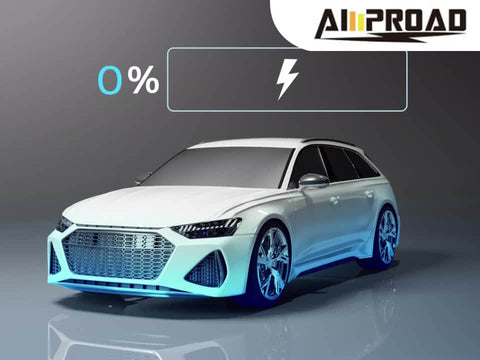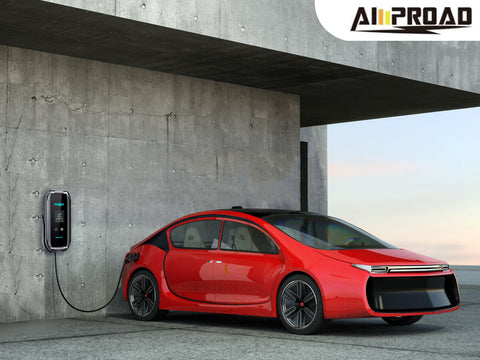
The North American Charging Standard (NACS) is a challenger in the race for universal EV charging. Developed by Tesla, it's a single connector that aims to simplify your electric car experience. Unlike some bulkier options, NACS offers both fast DC charging for highway top-ups and slower AC charging for overnight home charging, all in one compact design. Tesla recently opened up NACS for other manufacturers to use, potentially making it a common sight at charging stations across North America. But is NACS the future of EV charging, or will it face competition from other standards? Let's delve deeper to see how NACS stacks up.
What’s the Purpose of DC Charging for Electric Vehicles (EVs)?
Imagine filling up your car in minutes, not hours. That's the promise of DC (Direct Current) charging for electric vehicles (EVs). Unlike AC (Alternating Current) charging, which slowly tops up your battery overnight, DC charging delivers a powerful jolt of energy, getting you back on the road quickly. It's perfect for long journeys where waiting hours to recharge isn't an option. Think of DC charging stations as the gas stations of the electric vehicle world, offering a quick and convenient way to refuel your car for extended travel.
Capabilities of NACS
Let's delve into NACS's capabilities, how it compares to existing standards, and its potential to become the go-to charging solution.
Can NACS be used for DC fast charging?
Absolutely! NACS stands as the pinnacle of DC fast charging, the undisputed superhero of electric vehicle (EV) charging. Picture replenishing your battery substantially within mere minutes, an invaluable asset for extensive road journeys or when time is of the essence. This capability renders NACS perfect for strategically positioned EVCS along highway, empowering drivers to swiftly resume their journeys and circumvent any apprehension related to range limitations. Its rapid charging prowess not only enhances convenience but also promotes the widespread adoption of electric vehicles by alleviating concerns about accessibility and practicality. As the automotive industry undergoes a paradigm shift towards sustainable mobility, NACS emerges as a beacon of innovation, propelling the EV revolution forward with its efficient and reliable charging infrastructure. With NACS leading the charge, the transition to electric vehicles becomes not just feasible but also enticing, promising a future where clean and efficient transportation is within everyone's reach.
Does NACS also support slower AC charging?
NACS doesn't merely cater to the demands of fast charging; it also accommodates your everyday charging requirements. It extends its support to slower AC charging, akin to the charging rate provided by Level 2 EV charger at home or public station. This slower pace proves ideal for overnight charging, seamlessly replenishing your battery while you sleep and guaranteeing a complete charge for your daily commutes. The versatility offered by NACS is unparalleled, granting you the convenience of fast charging for those on-the-go moments and the reliability of slower charging for routine use. This dual functionality ensures that whether you're embarking on a long road trip or simply commuting to work, NACS has you covered with its adaptable charging solutions. By seamlessly integrating both fast and slow charging capabilities, NACS eliminates the hassle associated with managing multiple charging options, providing EV drivers with a seamless and hassle-free charging experience. With NACS at your disposal, charging your EV becomes not just a necessity but a streamlined and effortless process, contributing to a more accessible and sustainable future of transportation.
How does the charging speed of NACS compare to other DC fast-charging standards?
While NACS offers impressive DC fast charging, it's important to consider its competition. Other DC fast-charging standards exist, like CCS (Combined Charging System). It's too early to say definitively which is faster, as both standards are constantly evolving. However, NACS boasts a compact design and supports high power delivery (up to 1 megawatt), potentially offering competitive charging times. The coming years will likely see a battle for supremacy as these standards are further refined.
NACS as a Standard
Is NACS Currently the Official DC Charging Standard in North America?
The world of electric vehicles (EVs) is buzzing with innovation, but one constant frustration can be the confusion surrounding charging standards. The North American Charging Standard (NACS) aims to simplify things, but is it the undisputed champion of DC fast charging yet?
While NACS is gaining significant traction, it hasn't quite reached the finish line as the universally accepted DC charging standard in North America. There are ongoing discussions and efforts to establish a single, unified standard, and NACS is a frontrunner in this race. The Society of Automotive Engineers (SAE) is currently standardizing NACS under the designation SAE J3400. This official recognition could solidify NACS's position as the go-to solution in the future.
Was NACS Developed by a Collaborative Industry Effort or a Single Company?
Unlike some industry standards that emerge from joint efforts, NACS has a more singular origin story. It was developed by Tesla, a leading electric vehicle manufacturer. While not an industry-wide collaboration, Tesla recently opened up NACS for other manufacturers to use. This openness could be a game-changer, paving the way for wider adoption and potentially tipping the scales in NACS's favor as the standard.
Are There Other Competing Standards for DC Fast Charging in North America?
The battle for DC fast-charging dominance in North America is far from over. NACS faces a strong competitor in the form of CCS (Combined Charging System). This standard, used by many automakers, utilizes a different connector design and is another contender for the title of the go-to charging solution.
The coming years will likely see a tug-of-war between these standards. As charging infrastructure expands and consumer preferences evolve, the standard that offers the best combination of efficiency, convenience, and widespread adoption will likely emerge victorious.
Adoption of NACS
NACS boasts the potential to simplify charging for EVs, but how far has it come in terms of real-world adoption? This section dives into NACS's current implementation. We'll explore if all EVs are NACS-ready, the availability of charging networks that utilize NACS, and how widespread its adoption is compared to existing DC fast-charging standards.
Do All EV Manufacturers Currently Use NACS for Their Vehicles in North America?
With NACS offering a potential one-stop shop for both fast DC charging and slower AC EVSE level 2 charging, you might wonder if it's already the standard connector for all EVs in North America. The answer is not quite yet. While NACS is gaining momentum, adoption is still in its early stages. Major automakers like Ford, Honda, and BMW have announced plans to integrate NACS into their future vehicles, but not all manufacturers are on board just yet. This means you might still encounter a mix of charging connector types depending on your EV model.
Are There Existing DC Fast-Charging Networks that Utilize NACS?
The good news is that the picture is starting to change. Tesla, the creator of NACS, has opened up its extensive Supercharger network to vehicles equipped with NACS adapters. This allows compatible EVs from other manufacturers to access the vast network of Tesla Superchargers, significantly expanding charging options for NACS-enabled vehicles. Additionally, new charging networks specifically designed for NACS are beginning to emerge, further solidifying its presence in the landscape.
How Widespread is NACS Adoption Compared to Other DC Charging Standards?
While NACS is making strides, it's still competing with established players like CCS (Combined Charging System). CCS is currently more widely adopted by automakers and has a larger network of existing charging stations. However, NACS's potential for high-powered charging and Tesla's recent efforts to open up its network could shift the balance in the coming years. Ultimately, the widespread adoption of NACS will depend on several factors, including continued support from automakers, the expansion of NACS charger infrastructure, and consumer preference for features like high-power charging capabilities.
The Future of NACS

With its innovative design and potential for both fast DC and slower AC charging, NACS has emerged as a strong contender in the race for a universal DC charging standard in North America. But will it cross the finish line first?
The Road to Dominance
Several factors point towards NACS's potential dominance. Tesla, a major force in the EV industry, has opened up NACS for other manufacturers to use. This openness could encourage wider adoption and create a snowball effect. Additionally, NACS boasts a compact design and the potential for high-power charging, making it an attractive option for both automakers and consumers. The recent standardization efforts by the SAE under the designation SAE J3400 further solidify NACS's position as a serious contender.
Challenges on the Course
However, NACS faces some hurdles. Currently, not all EV manufacturers are on board, and CCS (Combined Charging System) remains a well-established competitor with a larger existing network of charging stations. Additionally, NACS is a relatively new standard, and its long-term reliability and potential compatibility issues with future technologies remain to be seen.
The Final Lap
Ultimately, the fate of NACS as the dominant standard hinges on several factors. Continued support from automakers, the rapid expansion of NACS charging infrastructure, and consumer preference for features like high-power charging will all play a crucial role. The coming years will be an exciting time to watch the battle for supremacy unfold, with NACS having a strong chance of emerging victorious. However, only time will tell if it can dethrone existing standards and become the go-to charging solution for EVs in North America.





